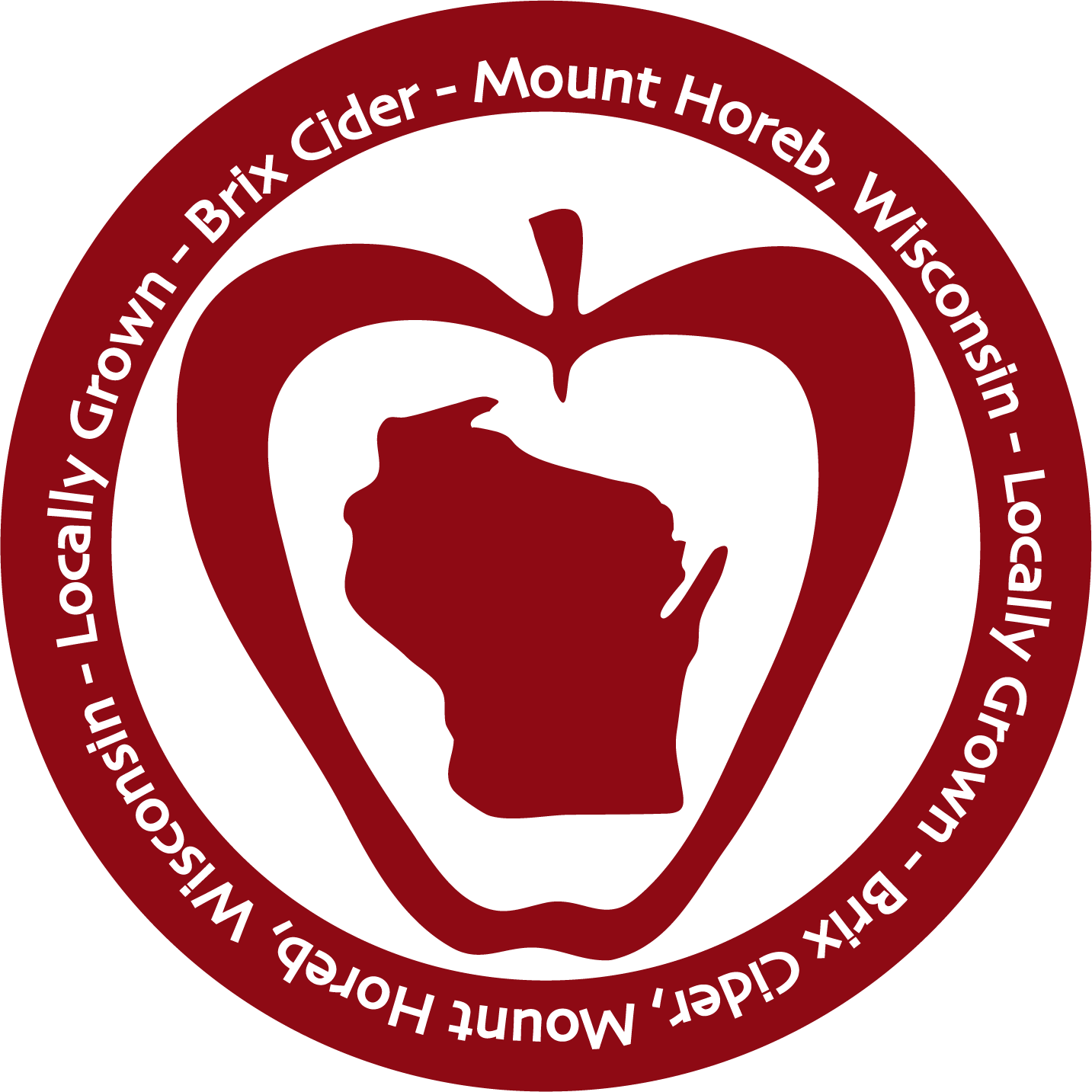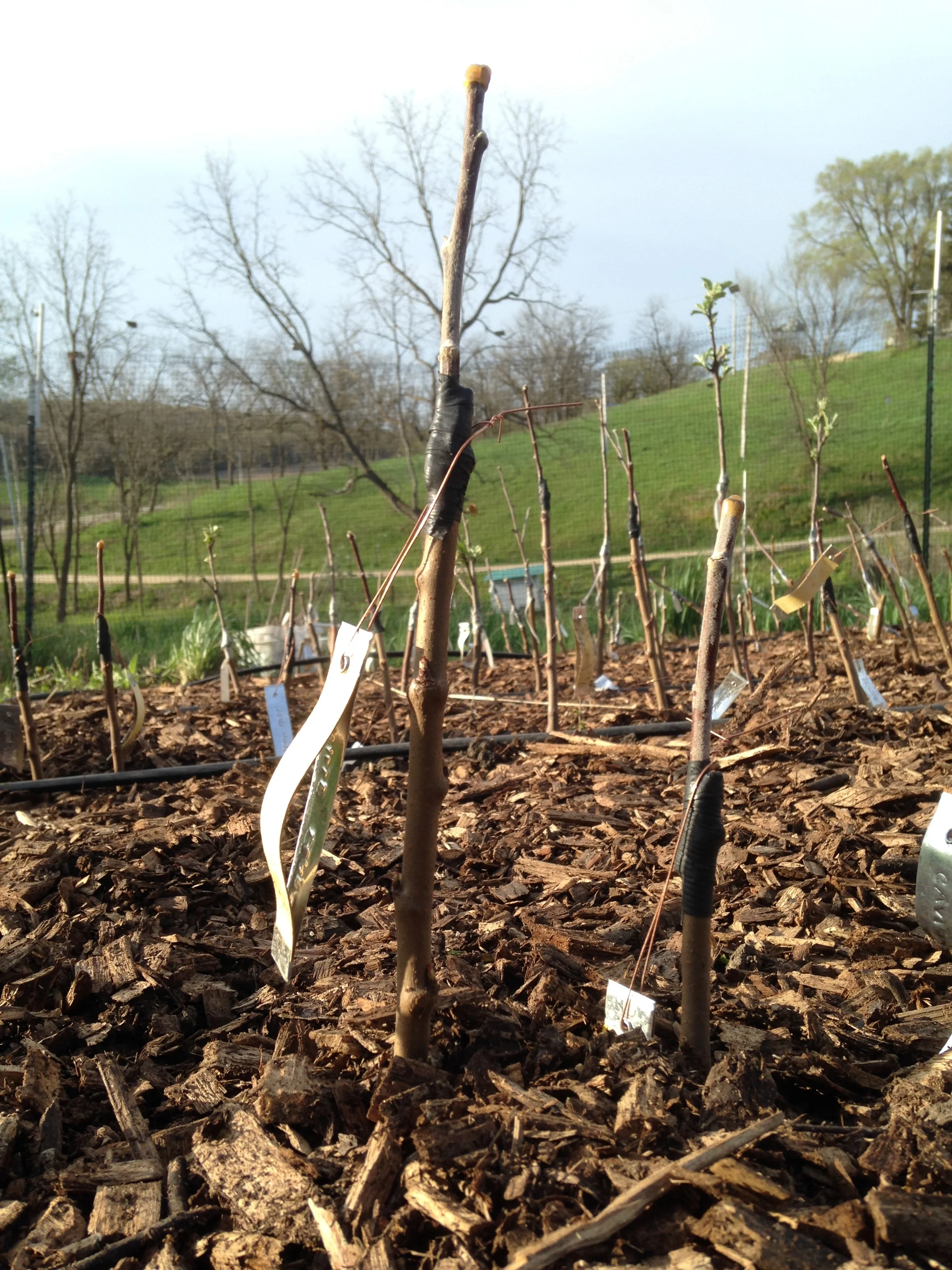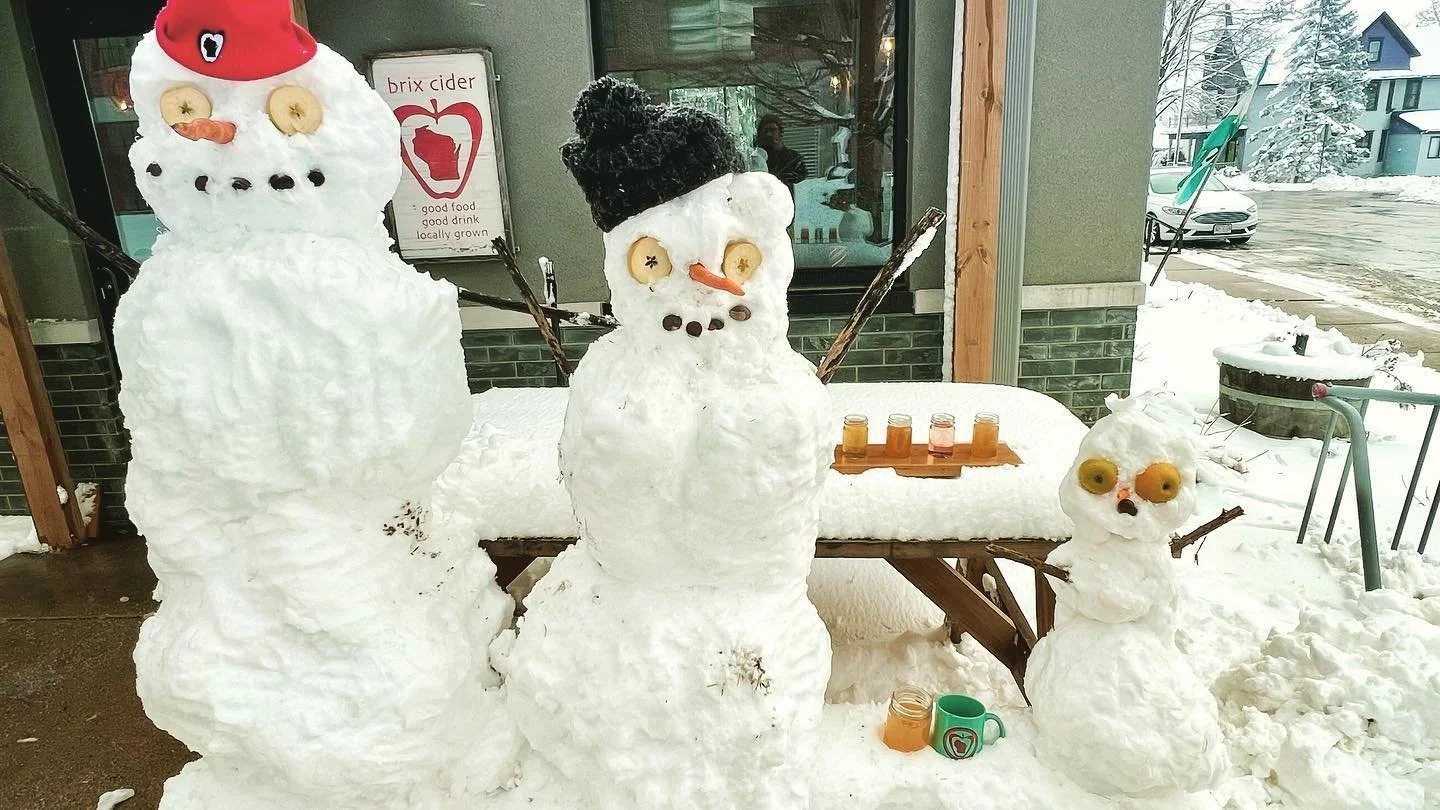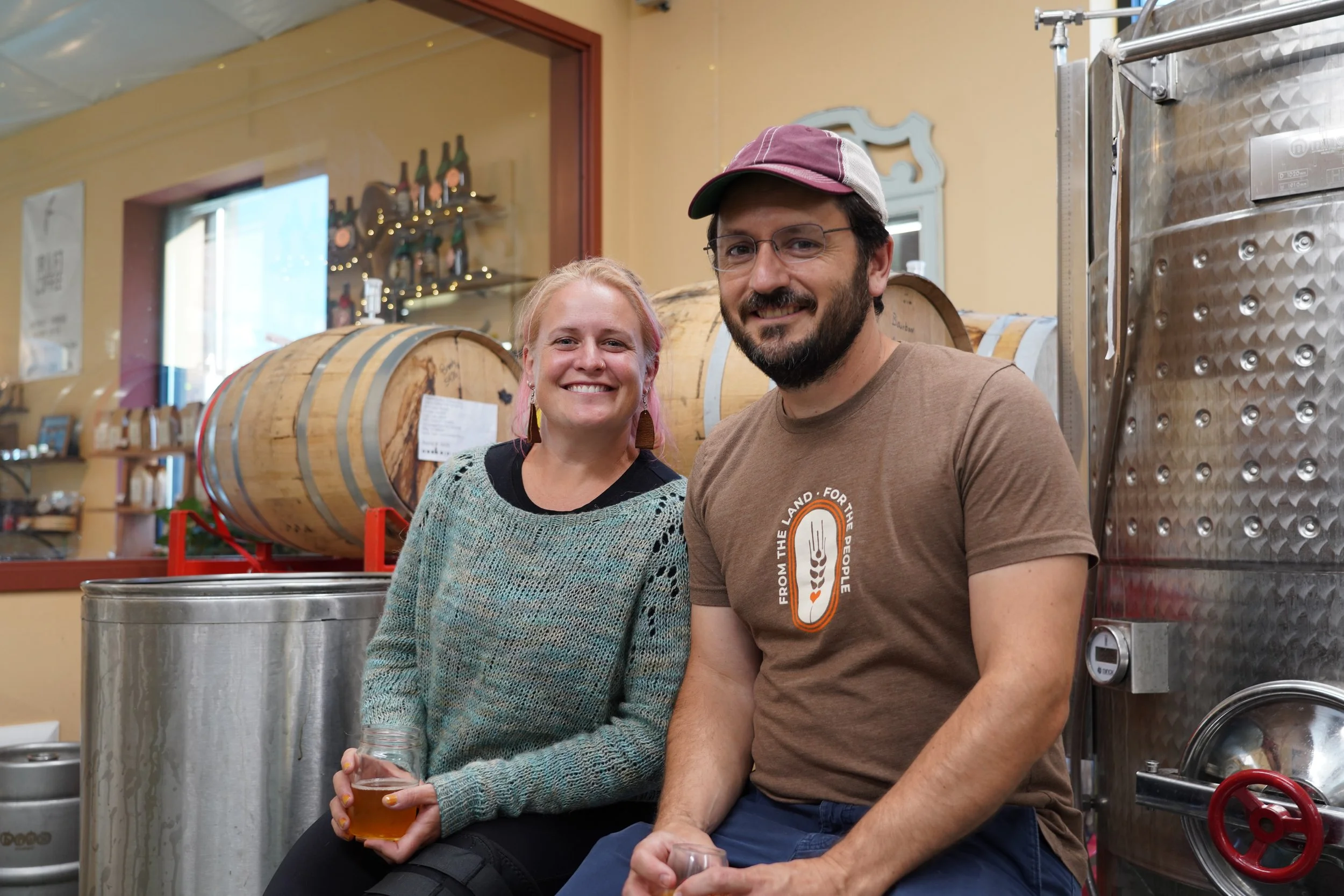Taping Sticks Together
Hacking a limb off of one living creature and taping it onto another seems crude. And the expectation that they will survive and grow together sounds like something out of a Frankenstein novel.
You may not realize it, but every apple you have ever eaten likely grew from a tree that started with this practice. I’m talking about grafting of trees (or the related practice of budding).
To graft a tree, one first cuts new growth off of the end of a tree branch. The resulting twig is called a scion. One then digs up a rootstock, which is another twig with a few roots attached. With careful cuts and some tape, one then sticks the two twigs together, makes a wish, and plants it in the ground.
Above: Grafted trees in our 2016 nursery (a.k.a. "sticks taped together")
We graft trees because we want the apples to turn out like the apples from the mother tree where we cut that first twig. And in fact, the apples will turn out exactly the same as the apples from the mother tree because grafted trees are essentially clones. Every Honeycrisp apple in the world, for example, came from one single tree at the University of Minnesota that has been cloned millions of times. Cloning of trees through grafting, has actually been happening for thousands of years.
In spite of this long history, and even though we’ve been grafting trees ourselves for several years now, I still never believe it’s going to work. I check on the trees daily, to see if any buds are starting to swell. I worry about the moisture, the temperature, the soil fertility, the angle of our cuts, or the length of time that the scions spent in our refrigerator… and then one day, all of a sudden, little buds start to unfurl, and I see green.
Above: Time lapse photos in our 2016 tree nursery
This year we’re trying something new. Remember how we harvested wild apples this fall? Wild apples grow from seeds, so each one is genetically unique. The colors, flavors, and textures are all over the place. While picking those wild apples this fall we took the GPS coordinates of a few trees that produced particularly promising cider apples. We’re now going to try grafting those and naming them. Perhaps we’ll discover the next great cider apple.
Above: Marie collecting scions from wild apple trees












